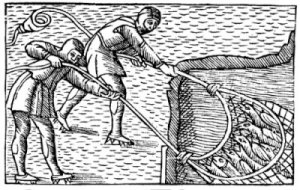POSTED ON
Swallows hibernate in lakes and mud

Given that for much of Europe Africa is a fairly recent discovery it is not surprising that the concept of birds migrating thousands of miles in the winter is the result of fairly recent discoveries. In the last few years finding birds in various parts of Africa gave us some clues, but which birds were these? How did we know where birds from England went, as opposed to those from Ireland, France or Germany?
I heard Dr Andrew Clements of the BTO talk about this last week. Dr Clements has been busy looking at cuckoos. There are 65% fewer of them than there were in the 1980s and no one really knows why. Decline in species is a complex matter and is usually a mix of habitat loss, changing weather patterns and persecution.
As leather scientists we know that we cannot judge something like this without good scientific facts and after over a hundred years of struggling to find out how cuckoos live their lives we can now add solar power GPS monitors to follow them in real life. It has only been possible since 2011 as that was when we were able to get a tag that weighed less than 3% of the bird’s weight which is the maximum that will not cause it problems.
The cuckoo places its eggs in the nests of other birds so a lot of things have to come together for a successful breeding season. To read the whole information you will have to look at the BTO site but in summary:
- Climate patterns means that the food for breeding birds is available earlier than in the past
- The host species that Cuckoos use have started to breed earlier
- Many migratory species have started to adapt by returning to the UK a few days earlier
- The cuckoo relies on rains in west Africa to generate the grubs etc in needs to build up strength to cross the Sahara
- The timing of the rains has not changed so the Cuckoo cannot start out earlier and its arrival, almost to the day, has not changed
There is a lot more to it than this, but the point is that well researched science allows us to drill down and start to understand what is going on and the options we really have for interventions. The speed of modern communications and the power of an over-simplistic press time and again leads society, and thus politicians, to conclusions that seem logical but are loaded with wrong thinking. The leather industry needs to sow the way and ensure that we offer sound science, well collated evidence and generate credible advocacy. We need politicians to understand and help.
As tanners we make a lot of noise about our raw material being sustainable and our future positioning of leather is increasingly going to be one of a material in harmony with the natural world around us. Bio-diversity is important, as are the farming practices which affect our raw material.
This means that we must find our voice to speak out against reports that impact our industry such as Livestock’s Long Shadow from the FAO in 2006 and the Slaughter of the Amazon in 2009 from Greenpeace. Neither are balanced statements and both contain major errors which impact hugely on the anti leather discussions taking place at dinner tables and coffee shops throughout the world.
Just as importantly we need to promote good science, and agriculture is an important place to start. In the UK we are lucky to have an alumnus and ex tanner, Owen Paterson, as our Minister for the Environment. Tanners need a solid agricultural base, and a slowdown in the extraordinary extent of change in UK biodiversity. The NGOs that attack leather use a narrative from the past and they pick and choose the science that they use (like the two reports above).
It would be a shame if our first Minister of the Environment got a reputation for doing the same thing. The environment should not be seen as a barrier to economic growth or be used to promote bad science.